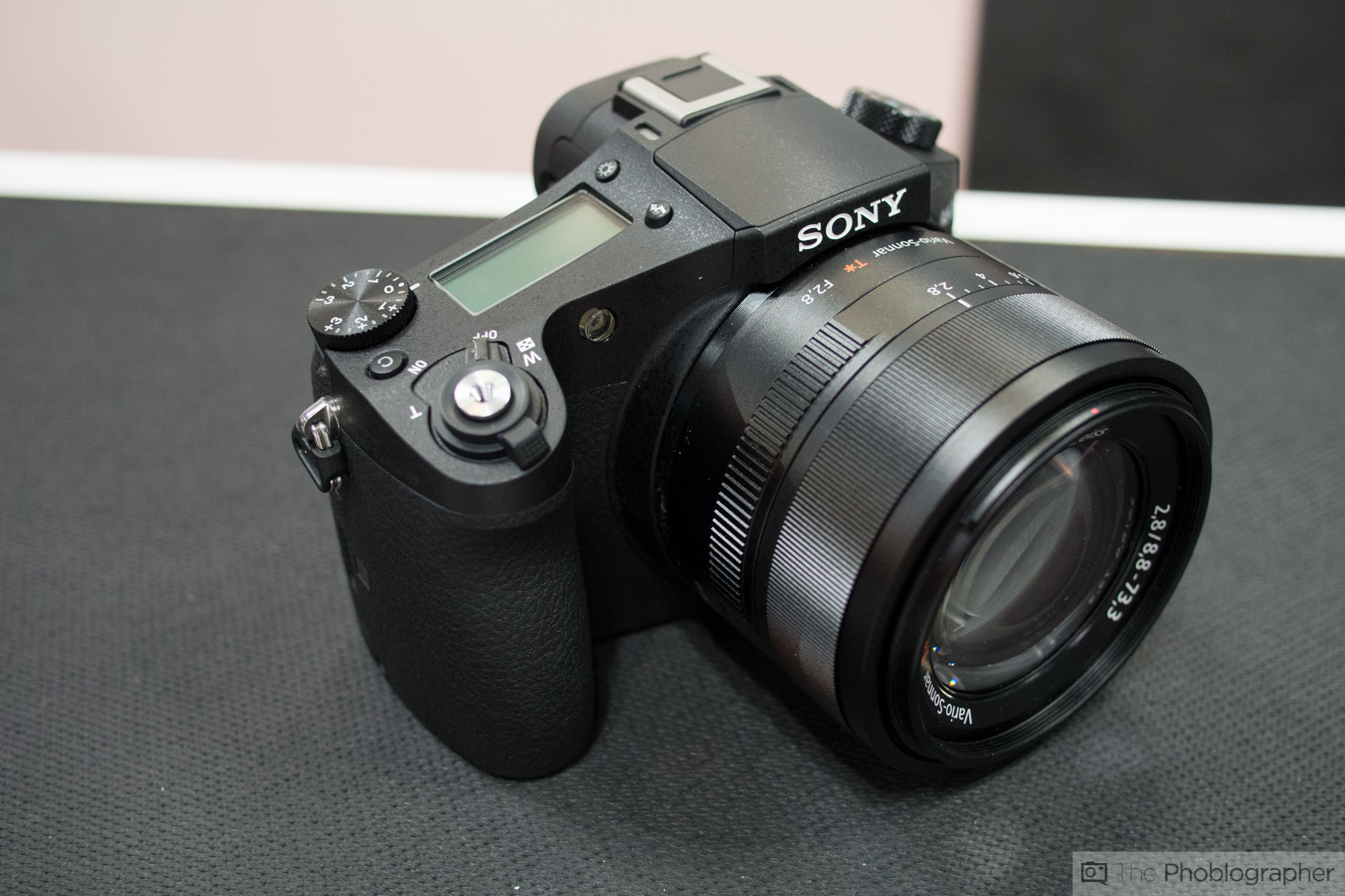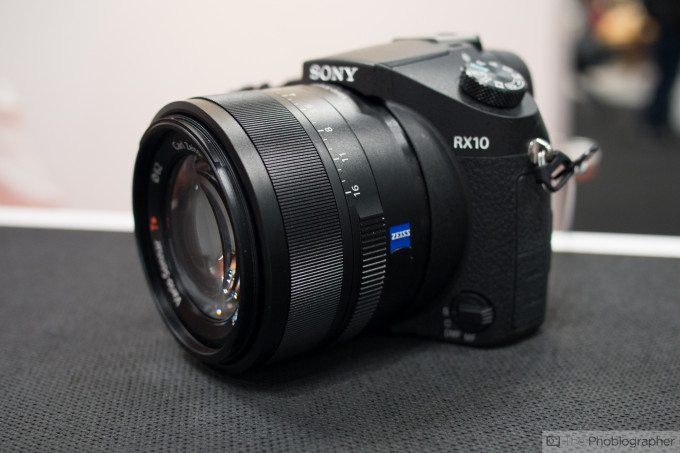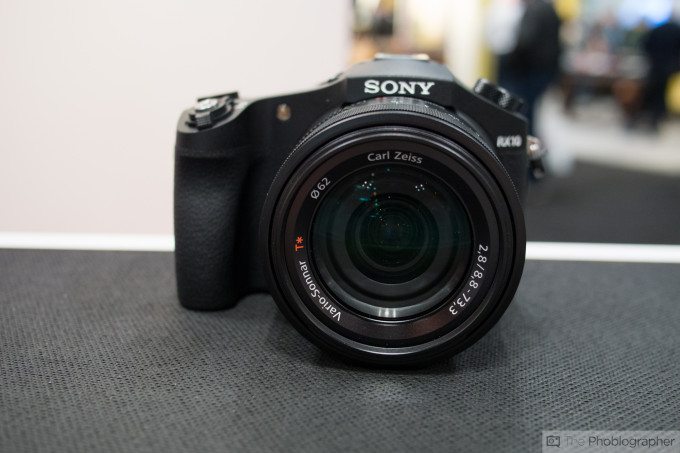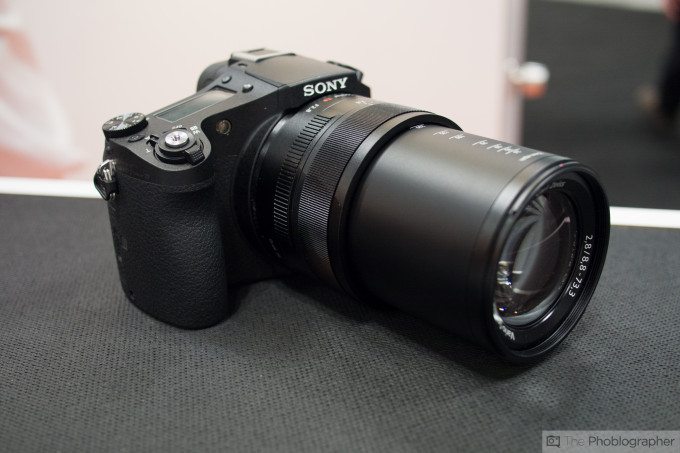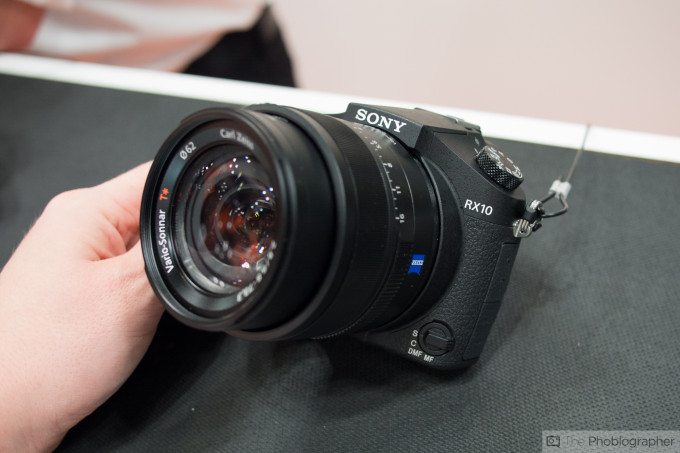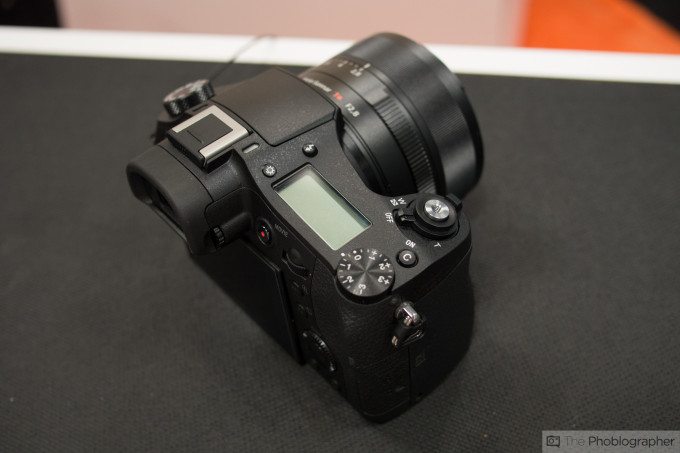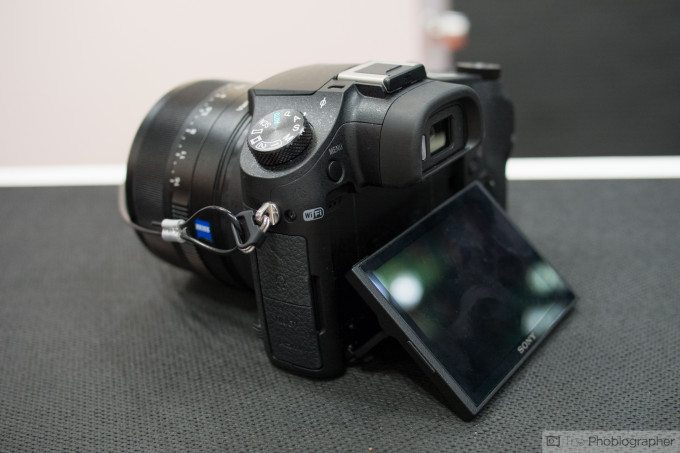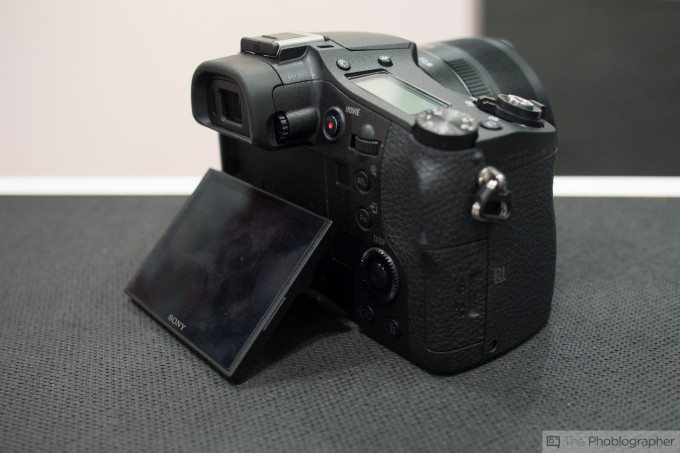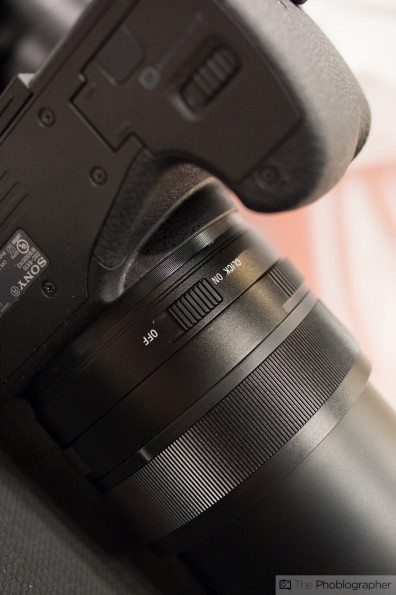Last Updated on 10/26/2013 by Chris Gampat
When Sony recently announced the RX10, they had us scratching our heads a bit. What everyone really expected was something along the lines of the Fuji X100 and Nikon Coolpix A, i.e. an APS-C version of the RX1. Instead, what we got was a superzoom compact–but what a superzoom compact it is. Sporting the same 1″ sensor as the RX100 Mk II, the RX10 features a huge 24-200mm equivalent lens with a constant f2.8 aperture.
In addition, it has a tilting screen and, unique among all fixed-lens compacts, an LCD info screen at the top. At this year’s Photo Plus Expo, we spent some one-on-one time with it.
Tech Specs
- 1” 20.2 MP Exmor R sensor for extreme low-light shots
- Bright F2.8 Zeiss Vario Sonnar T* Lens (28-200mm)
- Ultra-fast AF thanks to new “BIONZ X” processing engine
- Selectable click/click-less ring for precise control
- Full HD movies at 60p/24p with full exposure control
- Professional dust/moisture resistant mag-alloy body
- Up to ISO 12800 sensitivity w/ advanced noise reduction
- Sharp 3” multi-angle LCD and bright XGA OLED viewfinder
- Multi-interface Accessory Shoe for system accessories
- Simple connectivity to smartphones via Wi-Fi or NFC
Ergonomics
The front of the camera is dominated by the huge Zeiss-branded 24-200mm equivalent f2.8 lens. The size of the lens stems from the facts that it needs to cover the larger than average image circle of the 1″ sensor, and that it sports a fixed f2.8 initial aperture. In hand, despite the bulky lens, the camera feels surprisingly balanced.
When powered off, the lens retracts completely into the barrel. When zooming in, though, it moves from a slightly extended position to looking like a tank cannon when at the 200mm equivalent focal length setting.
At the bottom left (or right, depending on your perspective) part of the front, there’s the focusing mode switch. This is a very handy feature that we’ve seen on a couple of cameras from different manufacturers as of late.
The top right portion of the RX10 sports the shutter button, surrounded by two switches for the power and the zoom. The zoom can also be activated by the ring around the lens. Then there are some extra direct-access buttons, a very useful and highly appreciated EV compensation dial, and finally the LCD display which makes the RX10 stand out from the crowd. It will display information such as shutter speed, aperture, and ISO.
The top left portion sports the mode dial, and that’s really it. On the left hand side there are two flaps covering a headphone jack (which is nice for videographers) as well as other ports such as an HDMI interface.
On the rear of the camera, the most prominent element is the tiltable screen, which sports a good resolution for both stills and video work. The EVF is also nice to work with thanks to its high resolution, which is sufficient in order to judge sharpness when focusing manually.
Buttons wise, the rear of the RX10 resembles that of Sony’s NEX cameras or the RX10’s little sibling, the RX100 Mk II. On the right hand side, at the rear of the grip, there’s the flap that covers the SD card.
Finally, at the bottom of the camera we find the tripod mount as well as the battery compartment. On the lower right of the lens barrel, we find another surprise: a switch that toggles the clickless aperture, which is a first on a fixed-lens camera and has so far only been incorporated into Voigtländer’s fast Micro Four Thirds lenses.
Build Quality
The RX10’s build quality can be summarized in one word: excellent. Even during the short time that we spent with it at Photo Plus Expo 2013, we were left with a very positive impressions. The camera feels very solidly built, no rattling or tolerances, with a great feel to both the metal and plastic parts. The buttons and dials all have a great tactile response, and the weight of the huge lens adds to the overall feel of solid construction.
Autofocus
Upon a quick test, the RX10’s autofocus was operating relatively quickly. Relatively in a sense that it’s nowhere as fast as that of Olympus’s latest Micro Four Thirds cameras, but fast enough for most purposes. Both at the wide and the tele end, we had no issues quickly focusing from a near to a far object. Focus accuracy also didn’t seem to be an issue, from what we could tell.
Ease of Use
Operation-wise, the RX10 works like any other camera out there. What might need some getting used to is the fact that the ring around the lens works for both zooming and focusing, depending on the settings you choose. So you can either opt to zoom using the lever around the shutter button, or the lens ring. If you’re in manual focus mode, the lens ring will be used for focusing.
The rest of the camera is pretty self-explanatory. We were a bit confused by the clickless aperture at first, though, until we found the switch at the bottom of the lens barrel. The LCD info display is very nice and handy, and we liked it a lot.
Image Quality
In the image quality department, we can expect the RX10 to perform similarly to the RX100 Mk II, at least in terms of the sensor’s capabilties. As for the lens, we can’t really say much about its performance at this point, as we will need to do some thorough testing first. Our first impression were that of some slight softness at the tele end, but that migh have had to do with the fact that the camera opted for ISO 3,200 in order to keep the shutter speed high enough for the image not to turn out blurred.
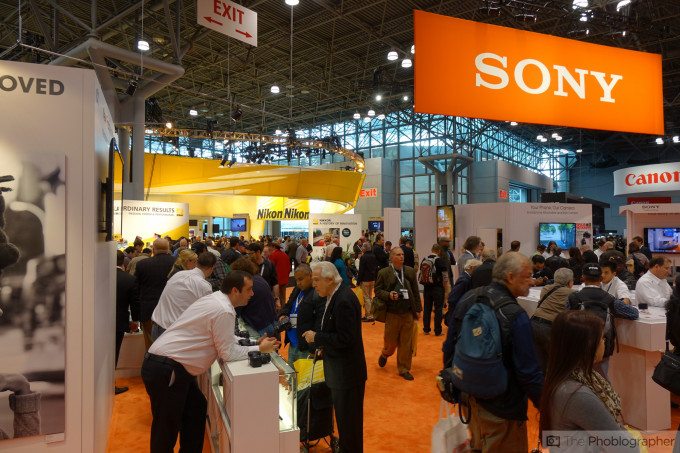
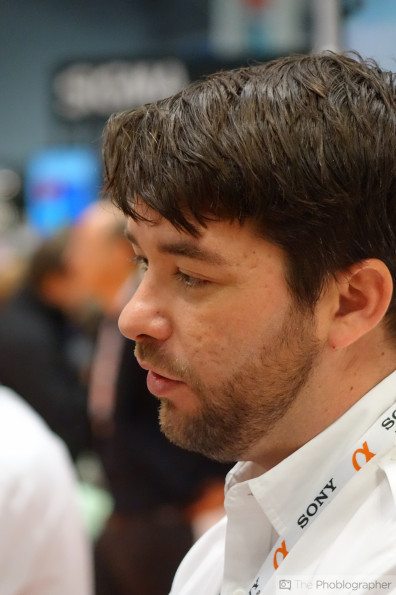
First Impressions
We were left with some very positive first impressions of the Sony RX10. Not only does it feel very well made, but also the Zeiss branded lens and the 1″ sensor from the RX100 Mk II promise a lot of image quality. The overall build quality is excellent, and the camera feels very well balanced, even with the lens extended to its full zoom position. The size is a factor that might not make so appealing to stills photographers, though, considering that it edges on the DSLR form factor. For the videography crowd, however, this might actually be something to look into, for several reasons.
For one, it has the clickless aperture ring, which you usually only find on cine lenses. Then, it has a very versatile focal length range and a smoothly operating zoom-by-wire mechanism. Finally, the RX10 uses the whole sensor output for video recording, and doesn’t skip lines like most larger-sensor cameras so. In that regard, we’re curious to see how the camera performs when we get our hands on a review unit.
Please Support The Phoblographer
We love to bring you guys the latest and greatest news and gear related stuff. However, we can’t keep doing that unless we have your continued support. If you would like to purchase any of the items mentioned, please do so by clicking our links first and then purchasing the items as we then get a small portion of the sale to help run the website.


